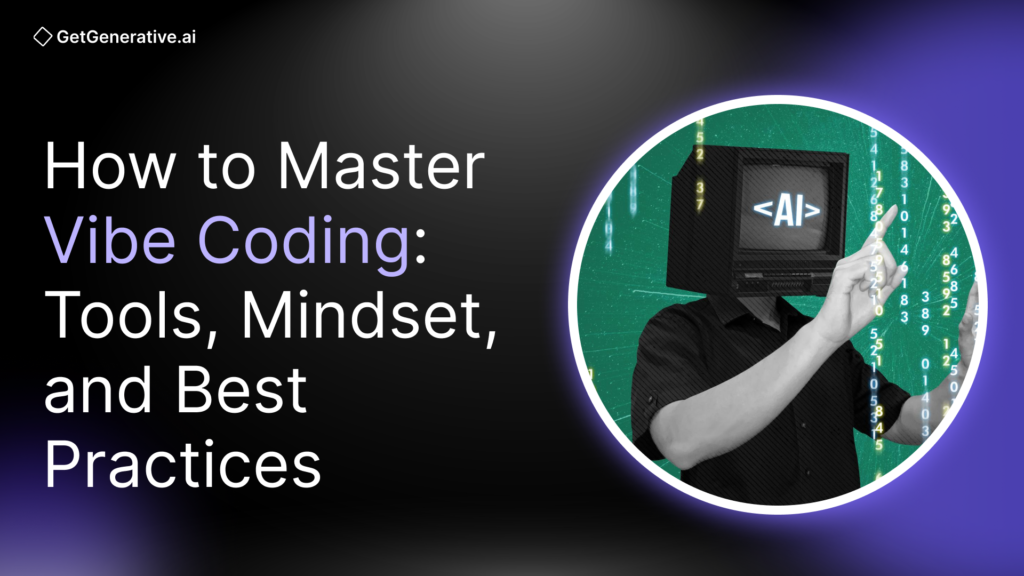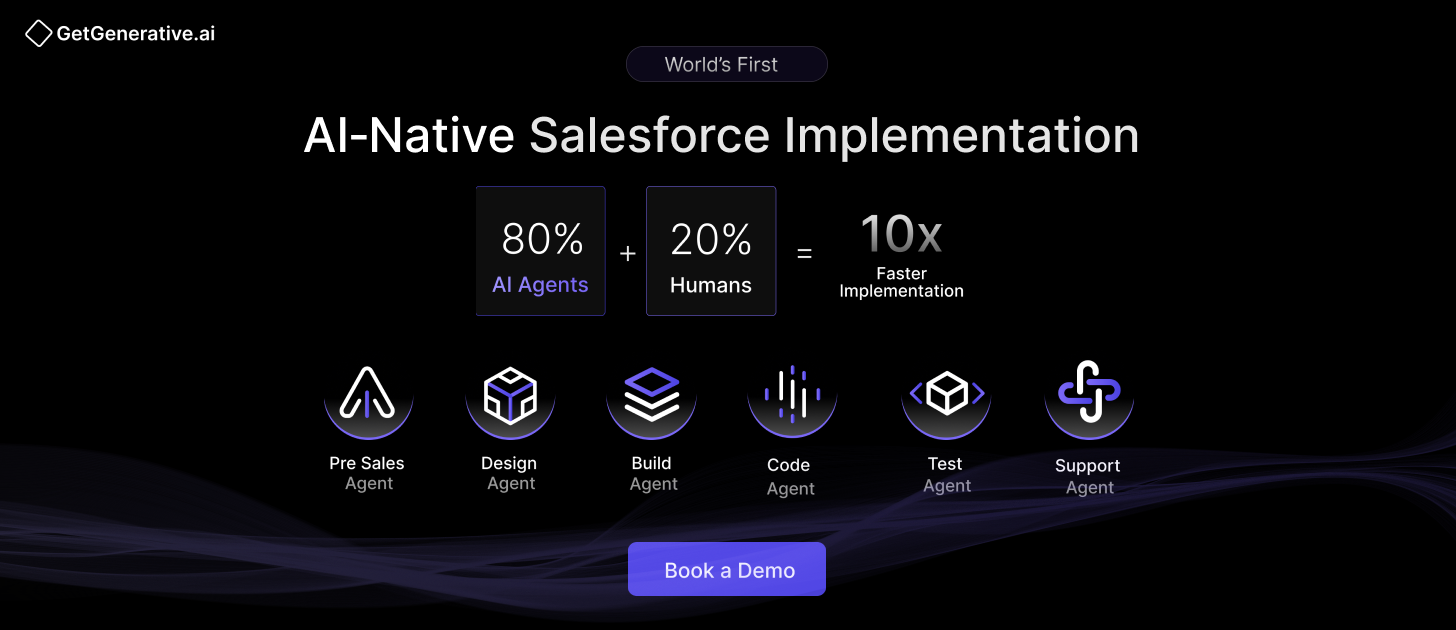How to Master Vibe Coding: Tools, Mindset, and Best Practices
As of 2025, 25% of Y Combinator startups report using AI to generate up to 95% of their code. The implications are profound: AI tools like GitHub Copilot, ChatGPT, Cursor, and Lovable are not just assistants — they are collaborators. Vibe coding is now recognized by experts and platforms like Merriam-Webster, Fast Company, and TechCrunch as the next major evolution in software development.
This guide offers a comprehensive playbook for mastering vibe coding. Whether you’re a CTO, engineering lead, or senior developer, you’ll find practical strategies, mindset shifts, best practices, and tool recommendations to help you:
- Integrate AI into your coding workflow
- Choose the right LLM tools for the job
- Maintain quality, security, and scalability
- Cultivate a prompt-first development mindset
By the end, you’ll have the insights to not only adopt vibe coding, but lead its strategic application in your organization.
What Is Vibe Coding?
Vibe coding is the practice of writing software through AI-driven natural language interfaces, rather than manually typing each line. Developers provide prompts, such as “Create a responsive login form with user validation in React,” and the AI outputs complete components, scripts, or even entire applications.
How It Works
Instead of starting with syntax and structure, developers guide the AI using natural language prompts. The role shifts from manual coding to prompt engineering, validation, and architectural oversight. As Karpathy explains, it’s “conversational programming”: you say things, run things, copy-paste things — and it mostly works.
Key aspects include:
- Natural language input → Code generation via LLMs (e.g., GPT-4, Claude)
- Iterative refinement → Prompt → Code → Test → Refine loop
- Reduced manual control → Increased abstraction and faster iteration
According to Merriam-Webster, vibe coding implies the developer may not fully understand how the code works, and should accept a certain level of ambiguity or bugs. This raises flags for some, but opens unprecedented speed and access for others.
Democratizing Software Development
The New York Times’ Kevin Roose notes, “you don’t have to know how to code to vibecode.” Non-technical founders, hobbyists, and domain experts can now build prototypes, apps, or tools with just a vision and a few prompts.
Tech media reports and funding trends reflect the momentum:
- Cursor, Replit, and Lovable have collectively raised over $100M+ in funding
- Copilot users complete tasks ~55% faster, according to GitHub’s internal research
- Over 60% of developers now use AI tools weekly (Stack Overflow Developer Survey, 2024)
Also Read – Vibe Coding in Salesforce: What It Is and Why It’s the Future
Essential Tools for Vibe Coding
Mastering vibe coding requires selecting the right tools based on your goals — whether you’re building UI components, scaffolding APIs, or deploying full-stack applications.
1. AI Code Assistants
These integrate with IDEs like VSCode, JetBrains, and others to generate code snippets, complete functions, or suggest fixes in real time.
Tool | Key Features | Notable Stats |
GitHub Copilot | Code suggestions, autocomplete, test generation | Users complete tasks 55% faster |
Codeium / TabNine | Multi-language support, autocomplete for enterprise use | Growing adoption in dev teams |
ChatGPT / Codex | Long-form code generation via natural language | Used for code generation, debugging, and documentation |
2. Conversational IDEs
Tools like Cursor, Replit Ghostwriter, and ChatGPT’s Code Interpreter offer full conversational interfaces, letting developers build software by chatting with AI.
- Cursor Composer can scaffold apps from natural language
- Replit Agents now support full-stack deployment through conversational input
- Some IDEs allow push/pull from GitHub directly, bridging AI output with developer workflows
These tools lower the barrier to entry and make AI development accessible to non-experts.
3. AI-Powered App Builders
Platforms like Lovable, Bolt, and Uizard cater to non-developers and startup teams by generating working apps from structured prompts or even sketches.
- Lovable: Create apps from business logic prompts
- Bolt: Visual app building with AI-assist on logic and data models
- Uizard: UI-to-code via image upload or sketches
No-code tools were already rising; AI has now supercharged this space.
4. Prompt Engineering Tools
Prompt quality determines the quality of output. Tools like:
- Sonnet: Tailored for debugging and explanation
- OpenAI Playground: For fine-tuning prompt behaviors
- Promptable and FlowGPT: Community-driven prompt sharing
These help developers refine, reuse, and document prompts.
5. Supporting Tech Stack
For best results, use:
- TypeScript, Python, or JavaScript (strong LLM support)
- TailwindCSS, Next.js, Firebase, or Supabase for web apps
- .env files and secret managers for secure deployments
Use Git for version control and commit AI-generated code often — a crucial best practice.
6. Debugging and Visualization Aids
Tools like:
- Copilot for Test Generation
- ChatGPT for Code Review
- SAST tools (e.g., SonarQube, Semgrep) for static analysis
These aid in catching hallucinations, vulnerabilities, and regressions — especially when reviewing large volumes of AI-generated code.
Also Read – A Comprehensive Guide to Vibe Coding Tools
The Vibe Coding Mindset
Tools alone aren’t enough — mastering vibe coding demands a shift in how we think, plan, and operate as software engineers.
1. Think in Prompts, Not Syntax
Prompt engineering replaces low-level coding. Break requirements into focused, structured prompts like:
- “Create a responsive navbar in React with logo and login button”
- “Write a secure Node.js endpoint for user login with JWT”
Avoid multitasking in prompts. Prompt one task at a time, test, then iterate.
2. Review, Don’t Just Generate
You are now a code overseer. Always:
- Review AI outputs line-by-line
- Ask the AI to explain if unclear
- Run tests, check logic, and scan for vulnerabilities
As Diana Hu (YC) advises: “You must still be good at finding bugs.”
3. Stay Technically Grounded
Even with AI, technical fundamentals matter:
- Know when the AI is wrong
- Understand architecture trade-offs
- Guide AI with clean, modular thinking
Your CS education is your best ally in vibe coding.
4. Plan First, Prompt Second
Before touching an LLM:
- Write a Product Requirements Document (PRD)
- Sketch basic wireframes
- List dependencies and setup steps
This upfront clarity improves prompt success and reduces AI confusion.
5. Iterate Rapidly
Use a looped approach: prompt → test → revise → re-prompt. This helps:
- Catch errors early
- Validate outputs fast
- Reduce rework and scope creep
Iterate, don’t overplan, and don’t hesitate to scrap and restart if needed.
6. Prioritize Security and Ethics
LLMs may output insecure or copied code. Protect your product and your users:
- Run security audits (SAST, GPT-4 review, etc.)
- Manage API keys and secrets properly
- Avoid deploying without proper testing
Also Read – Can Vibe Coding Work in Regulated Industries? Here’s What You Need to Know
Best Practices for Vibe Coding
Even with advanced AI tools, success with vibe coding hinges on a structured approach grounded in engineering discipline. Below are tested strategies that leading developers and early adopters use to bring order, quality, and scalability to their AI-assisted development workflows.
1. Plan Thoroughly: PRDs, Wireframes, and Specs
Don’t skip the groundwork.
- Write a Product Requirements Document (PRD): Define core features, flows, and expected behaviors. Use ChatGPT or Claude to refine it.
- Create UI wireframes: Visuals help clarify logic and reduce misinterpretation by AI tools.
- List out dependencies, secrets, and tech stack: Tools like Zapier emphasize prepping databases and API keys before AI prompting.
2. Use Version Control Religiously
- Set up Git repositories from the start
- Commit frequently after each prompt-based change
- Tag commits with descriptions (e.g., “AI-generated login form”)
GitHub integration is available in tools like Cursor and Replit. You can also automate pull requests and diff reviews using AI tools for transparency and rollback protection.
3. Start With Core Setup First
Install your project environment step-by-step:
- Choose and install the framework (e.g., React, Express)
- Add linters, formatters (Prettier, ESLint), and base configurations
- Scaffold your folders and API endpoints before styling UI
Avoid AI confusion by sequencing tasks predictably. Skipping ahead (e.g., calling Stripe APIs before setting up user models) often leads to errors.
4. Modular, Iterative Development
Use prompt chunking: one module, one prompt.
Example:
- Prompt: “Create a React login form with email and password”
- Test output
- Next prompt: “Add Tailwind styling and validation to the form”
- Continue iterating
Keep each module small, testable, and reusable. Mat Medeiros and others warn that asking for too much at once often results in broken or bloated output.
5. Always Test, Even with AI
AI code isn’t bug-free. Create and run:
- Unit tests (use Jest, Mocha, etc.)
- Integration tests
- End-to-end smoke tests using Cypress or Playwright
AI tools like ChatGPT or Copilot can also generate test cases. Make testing part of every prompt cycle.
6. Review and Debug Actively
Don’t trust the AI blindly.
- Use the “rubber duck” method: explain the code back to yourself or the AI
- When errors arise, paste them into GPT-4 and prompt: “Fix this error and explain what caused it”
- Maintain a debug log or error journal to track prompt-related issues
7. Use AI for Security Audits
Paste sections of code into GPT-4 or Claude and prompt:
- “Check this for security flaws”
- “Look for injection risks or outdated libraries”
- “Audit this form for XSS or CSRF”
Augment this with static analysis tools like:
- Semgrep
- Snyk
- SonarQube
Run these checks in your CI pipeline to automate compliance and reduce the human workload.
8. Handle Secrets and Environment Variables Securely
Never hard-code credentials.
- Use .env files and exclude them via .gitignore
- Leverage secrets management in platforms like Replit or Vercel
- Double-check that no secrets are exposed before deployment
This is often overlooked in rapid prototyping, and frequently exploited in real-world security breaches.
9. Treat Prototypes Like Real Software (When Needed)
If your AI-coded project grows beyond MVP:
- Add CI/CD pipelines (GitHub Actions, CircleCI, etc.)
- Containerize (Docker) for deployment consistency
- Write technical docs (README, architecture diagrams)
- Apply human PR reviews before releases
10. Don’t Be Afraid to Restart
If your code becomes inconsistent, bloated, or bug-prone:
- Save what you learned
- Refactor or start fresh
- Reuse successful prompts or extract working modules
11. Document Prompts and Outcomes
Create a simple markdown file with:
- Each prompt used
- Output snippets (or summary)
- Edits or fixes made post-generation
This helps with reproducibility, onboarding, and prompt refinement in future iterations. Teams can even build internal prompt libraries.
Conclusion
Vibe coding is no longer science fiction. It’s a practical, scalable, and increasingly essential way to build modern software. Whether you’re a startup founder, senior developer, or engineering manager, embracing AI-powered development is not just an edge — it’s fast becoming the new norm.
Salesforce Implementation. Reimagined.
At GetGenerative.ai, we don’t bolt AI onto old methods—we’ve built a purpose-driven, AI-native platform that delivers Salesforce faster, smarter, and more efficiently than ever.
Explore our next-gen Salesforce consulting services.




